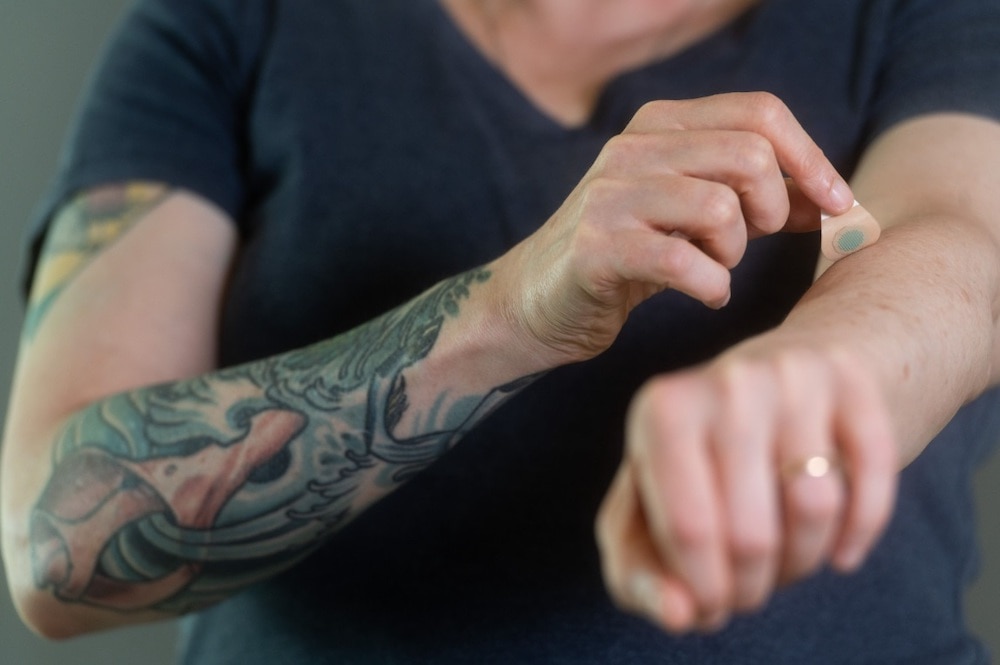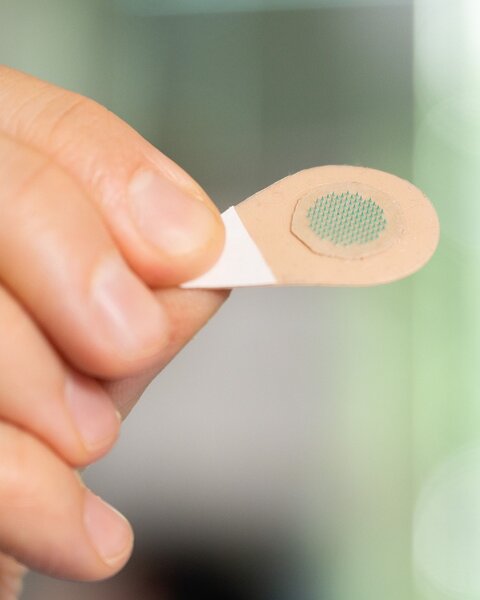Create a free profile to get unlimited access to exclusive videos, sweepstakes, and more!
In the future, tattoos could be designed by computers and applied painlessly
Art is pain... but does it have to be?

Getting a tattoo is often a slow and much considered process, one which has become more popular in recent decades. You go in with an idea of what you want, or else pick art from a flash sheet or portfolio, your artist then draws the image and makes a stencil. You converse about placement and make any last-minute adjustments. Finally, your artist spends the next several hours skillfully painting ink into your skin.
Getting a tattoo is an investment not only of money but also of time, not to mention the considerable pain you endure during the application. That is, unless you’re a 10-year-old who runs into The King of Staten Island on a beach, giving out tattoos for free. It’s a decision which goes poorly both in the moment and later on in the movie, but it could have been worse. After one line, that kid bails out and runs home. It’s probably for the best, getting free tattoos from strangers on the beach isn’t the most solid life decision, especially if you’re in the fifth grade.
In the future, however, that kid might never have had a chance to back out. Researchers from the Georgia Institute of Technology have developed a patch which delivers entire tattoos painlessly and in only a few minutes, according to a paper recently published in the journal iScience.
The patch looks almost like a Band-Aid, except that it’s armed with an array of tiny needles where the gauze patch would usually be. The needles contain tattoo ink which is destined for a permanent home in your skin. According to the team, the needles are so small that you won’t feel them pierce your skin, nor will they draw blood. Importantly, however, they’re still capable of reliably deploying ink. That all comes down to their unusual construction.
Most needles, even very small ones, are made of a sturdy material like metal, glass, ceramic, or some polymers. These tattoo patch microneedles take a different approach. The needles themselves are made of tattoo ink encased in a dissolvable casing.
Researchers start by arranging the needles in the desired configuration. Currently, they are capable of doing small shapes, letters, and numbers. Ink is then added, and a covering placed over the backside of the needles. Pressing the tattoo patch to your desired surface moves the needles into the body. You then leave the patch in place for a few minutes, allowing the needle itself to dissolve and leave the ink behind. Because you’re getting a single point of ink for each needle, the images achieved are reminiscent of retro video games or pixel art. In the future, you could easily create pixel art independently on a computer and translate those pixels to a microneedle array filled with the appropriate inks. A little press and a few minutes later, you’ve got permanent pixel art on your body.
Researchers were clear they don’t believe this can replace traditional tattooing, but it could provide an alternative for someone who doesn’t want to endure hours in a char getting stabbed a few thousand times. It could also have medical applications, including as a medical alert technology, a guide for radiation treatments, and post-operative or cosmetic procedures. What’s more, the needles work with black light inks which become visible only under UV lights. This could provide some additional privacy when permanently writing medical information on your body. It’s also just really cool.
There is, of course, the question of whether these patches can achieve the same permanence as conventional tattoos. Tattooing is an artform which has been practiced and perfected over thousands of years. We have an endless and growing supply of evidence that tattooing is an effective way of leaving permanent marks on the skin. Moving the process to a new technology opens up some questions about how this variety of tattoo will compare.
Researchers made additional observations after their tattoos were applied and have confirmed they last for at least a year, and there’s no indication they’re going anywhere. The evidence suggests they are just as permanent as any other tattoo. Just without the pain or the opportunity to turn back on a bad decision before it’s too late.



























